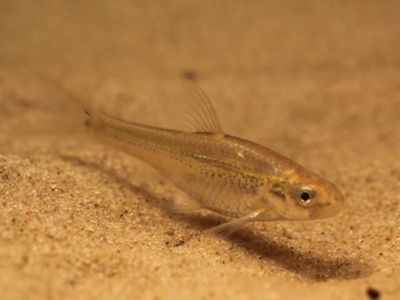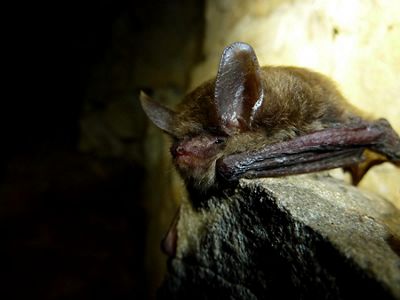
Have you ever seen a bald eagle? You can spot this beloved national icon in most areas of Oklahoma. In spring, you can even watch a live stream of their nests at Sequoyah State Park in the eastern part of the state. Found only in North America, this extraordinary bird of prey is arguably the most impressive wildlife conservation story of the Endangered Species Act (ESA) established in 1973.
Conservation Wins
In January 2021, the USFWS announced that the interior least tern was downlisted from the endangered species list. Oklahoma has two properties that have helped recover this species: easements along the Arkansas River and the Four Canyon Preserve which touches the Canadian River.
Due to their rapid decline primarily caused by the wide-spread use of the pesticide DDT, the bald eagle was listed as an endangered species in 1973 when the ESA was signed into law. Fortunately, bald eagle populations are no longer alarmingly low because of collaborative conservation efforts nationwide, many made possible with financial assistance and incentives from the U.S. Fish and Wildlife Service (USFWS).
In 2007, the USFWS removed the bald eagle from the federal endangered species list, meaning they are at low risk of harm or extinction.
Endangered vs. Threatened, Which is Worse?
Endangered species are species that are in danger of extinction right now throughout all or at least a significant portion of their range within the United States or even globally. All protections in the ESA are available to endangered species. Any activity that could potentially harm these species are required to have consultation and permits by the federal government.
Threatened species are species that are considered likely to become an endangered species in the foreseeable future. Many of the protections in the ESA are available to threatened species, but a threatened designation allows state and federal managers more flexibility for conservation. For example, state wildlife and natural resource management agencies can “take” (as outlined in the ESA) an individual of a threatened species for scientific or educational purposes. In contrast, for endangered species, those same state agencies cannot “take” nor allow any action that might kill or permanently disable an individual.
Any willful harm to either a federally endangered or threatened species is a federal crime that is punishable by significant fines or possible prison time.
Federal and State Lists, What’s the Difference?
There are two main differences between federal and state threatened and endangered species lists: geography and legal penalties. Species listed on state endangered and threatened lists are in danger of disappearing completely from that particular state and not the species’ entire range. A state wildlife agency—not the federal government—has the authority of enforcement for state listed species. The penalties or violations for harming the species on state lists are usually less severe than those under federal law.
Oklahoma’s Endangered and Threatened Species
There are 11 federally endangered, seven federally threatened, two state endangered and one state threatened species in Oklahoma.
Let’s introduce you to a few.

American Burying Beetle
The American burying beetle (Nicrophorus americanus) can be found at Joseph H. Williams Tallgrass Prairie and Oka’ Yanahli Preserves in Oklahoma and is currently listed as federally endangered. This beetle had an historic range that included 35 states and the southern borders of Canada. By 1989, it was only known in two places: Oklahoma and Rhode Island. Thanks to the ESA, it can now be found in nine states: Arkansas, Kansas, Nebraska, Oklahoma, South Dakota, Texas, Rhode Island and reintroduced populations in Massachusetts and in southwest Missouri. This species is currently being reviewed for downlisting to a Threatened designation.

Whooping Crane
The whooping crane (Grus americana) was listed as federally endangered in 1967. It is North America’s tallest bird, reaching heights of five feet tall. Whooping cranses make a stopover in western Oklahoma at Four Canyon Preserve as well as Salt Plains National Wildlife Refuge during their migration. In 1870, their population size was estimated at 500 to 700 individuals but declined to only 16 by 1941. In 2018, their Texas wintering population was estimated at 505 individuals—halfway to their recovery target of 1,000 birds.

Arkansas River Shiner
The Arkansas river shiner (Notropis girardi), with its flattened head and subterminal mouth, was listed as federally threatened in 1998 due to habitat destruction such as channelization, groundwater pumping and water quality degradation. Conservation efforts include maintaining essential water flow and protecting land along lakes, rivers and streams. In Oklahoma, they can be found in the Canadian River that flows through the Four Canyon Preserve.

Northern Long-Eared Bat
The northern long-eared bat (Myotis septentrionalis) is a species that is severely impacted by the disease, white-nose syndrome (WNS). WNS is characterized by white fungal growth around the muzzles, ears and wings of hibernating bats. As of 2018, this disease has killed at least 5.7 million bats in the United States and Canada. The northern long-eared bat has suffered a 98% population decline from this disease. This small bat uses Cucumber Creek Preserve in southeastern Oklahoma as a winter hibernating site.
Endangered Species Act
Learn more about the ESA and find the threatened species that may live near you.
DIscoverEndangered Species Act at Work
It’s hard to imagine the United States without bald eagles flying overhead or building nests in state park trees but, just 50 years ago that was the future we faced. Similarly, it’s painful to think we could see an Oklahoma without interior least-terns, American burying beetles or northern long-eared bats. Legislation like the Endangered Species Act protects the wildlife we love and helps ensure a world where people and nature thrive together.
The USFWS continues to monitor each species currently listed and under review for listing in the ESA, such as monarch butterflies and lesser prairie chickens, to determine if they should be added or removed.
